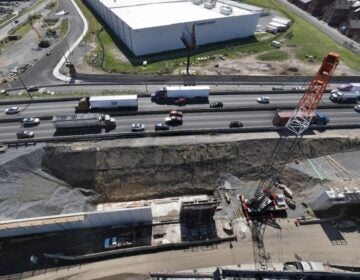What is a City Revitalization and Improvement Zone?

Eighteen cities are eligible for the two additional CRIZ designations planned currently. Lancaster (pictured) and Bethlehem already have CRIZ designations. (Lindsay Lazarski/WHYY)
One in a series explaining key terms and concepts of Pennsylvania government. Today’s topic: the City Revitalization & Improvement Zone, part one of six.
Seeking a better understanding of Pennsylvania’s issues and proposed solutions? Sometimes, complicated jargon and concepts can get in the way. That’s why we started Explainers, a series that tries to lay out key facts, clarify concepts and demystify jargon. Today’s topic: City Revitalization & Improvement Zone, part one of six.
CRIZ stands for City Revitalization & Improvement Zone.
It’s an economic development booster made available in 2013 after the Pennsylvania General Assembly passed enabling legislation in the state fiscal code.
It works like this: Certain state and local taxes generated within a CRIZ are diverted from government coffers to fund development and improvements in the zone.
Financial and planning decisions are made by the zone’s contracting authority, a five-member entity named by the city or county when it applies for the CRIZ.
Often, CRIZ redevelopment centers on a major private construction or renovation project financed through a public-private partnership.
Sometimes, the authority issues bonds to finance the project and repays them using eligible tax revenues associated with that project.
A developer also can finance a project in a CRIZ by borrowing directly and repaying that debt with tax revenues the authority has agreed to transfer. That scenario, however, doesn’t offer the benefit of lower interest rates the authority typically can get on tax-exempt bonds.
If the additional tax revenue isn’t enough to cover the debt repayments during the first seven years of the CRIZ, the state has pledged to pay the difference, up to $10 million. If more money is needed, the contracting authority can try for a waiver.
Regardless of the amount, the state has to be repaid in full before bondholders get their payments. If the state isn’t repaid by the time bondholders are, interest penalties kick in – and the CRIZ’s host community is on the hook.
What are the reporting requirements?
The contracting authority has to give the state:
• An annual audit• Yearly report detailing public-private fund matching• Contact information and tax ID numbers for businesses located or working on projects in the zone.
CRIZ businesses also have to submit extra tax forms. If they’re late, they’ll pay a penalty that’s the lesser of $1,000 or 10 percent of last year’s taxes. The fines go to the state or the contracting authority.
Additional sources: Lancaster Economic Development & Revitalization Director Randy Patterson; state departments of Revenue and Community & Economic Development
Did this article answer all your questions about the City Revitalization & Improvement Zone? If not, you can reach Emily Previti via email at emily_previti@witf.org or through social media @emily_previti. Have a topic on which you’d like us to do an Explainer? Let us know in the comment section below, or on Twitter @PaCrossroads.
WHYY is your source for fact-based, in-depth journalism and information. As a nonprofit organization, we rely on financial support from readers like you. Please give today.






